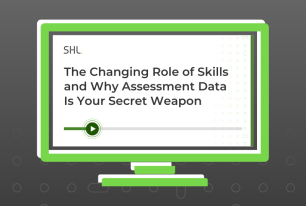Diversity Backlash: Managing Resistance to Diversity Efforts
Walking the usual steps to achieve inclusivity is important in DEI efforts. But have you thought about Diversity backlash? Learn how you can deal with it in this blog.
Share
Diversity, Equity, and inclusion (DEI) brings many benefits to organizations. It helps organizations to be more cohesive, engaging, and productive. However, DEI is not an easy issue to tackle. Managing DEI is not as straightforward as leaders would expect—the whole organization, from top to bottom, needs to be ready to change; there needs to be a balance between the three elements to avoid tokenism; and lastly, leaders must anticipate the possibility of a Diversity backlash.
While many leaders are often good at thinking about how to incorporate DEI in the workplace culture, and what steps are needed to achieve an inclusive culture, many tend to overlook outside of the usual frame. The fact is, not everybody has the same idea of the ideal DEI in the organization, and any mismatch can produce resistors if the DEI efforts are not done right.
So, what does Diversity backlash exactly mean and how can we avoid or mitigate it? Continue reading to find out about it and how to deal with it, so you can strengthen your DEI efforts.
What is Diversity backlash?
Diversity backlash is a circumstance where resistance to DEI is present. In the workplace, it happens when people’s behavior in organizations undermines any DEI efforts. Some examples of this are:
- Delaying implementation
DEI should be a pressing matter. However, when organizations do not realize the importance enough, there can be a delay in the implementation as they do not think of it as a top priority. - Denying that there is an issue
In the same way as “all lives matter”, this happens when organizations do not fully understand DEI issues and the context surrounding them. Discrimination is real and just because you never experience it, it does not mean that it is not there. - Thinking that DEI only happens in a utopia
We have been hearing the “DEI” phrase a lot in the past few years. For some people, this may create fatigue, especially when DEI is not implemented properly in the organization. Because they think it never happens anyway, and it is too time-consuming to try to achieve it, they resist taking any actions. - Questionable merit
Related to the scenario mentioned above, when a person is hired because of who they are, it can spark a backlash—is the woman hired because she is a woman, or is she really good at what she does?
Surprisingly, Diversity backlash is common in organizations. And unsurprisingly, many organizations also fail to anticipate this or notice this quickly enough to turn the situation around—or even worse, they fail to handle this properly when a backlash happens.
So how can you manage any resistance to your Diversity efforts?
How do you deal with Diversity backlash?
- Communication is key
When you create a DEI plan, you need to pay attention to how you frame the message. Use values that appeal to all groups, so nobody feels excluded. - Ask for feedback regularly
DEI is a journey that will and should last even if you have a change in leadership. You need to continue monitoring the progress, reviewing, evaluating, and learning from past mistakes and best practices to make it work, especially when you experience a backlash in between. This also helps you identify any signals of backlash early on. - Make the process transparent
Be honest with each other and make the information available to everyone from the beginning to the end, whether it is to privileged groups or under-represented groups. - Convert the resistors into allies instead of enemies
This is perhaps the toughest part of handling a Diversity backlash. When there are resistors in your organization, open some discussions with them and listen to their issues and concerns. Educate them with compassion and demonstrate that your DEI initiatives are truly for everyone. Build mutual trust and understanding so you can work it out together. - Educate, educate, and educate!
Awareness leads to compassion. For DEI efforts to succeed and to prevent any Diversity backlash, you should never stop training your people and promoting awareness on DEI issues. Only when people are truly aware of an issue and understand it, do they start to care about it.
DEI is a sensitive issue and very personal to each person. So, when things like this hit home, it is sometimes tough to accept or change our mindset. Understanding why Diversity backlash happens and acknowledging mistakes will help you create preventive measures. We should build an organization where it is not about “you” against “them”. Instead, we need to prioritize reconciliation of differences and collectively work on achieving inclusion, starting from the top to the bottom of the organization. So, let’s guard DEI in our workplace by leading courageously, fairly, and compassionately.
Read our other content on DEI where our passionate authors share tips and thoughts on how to build an inclusive culture.









